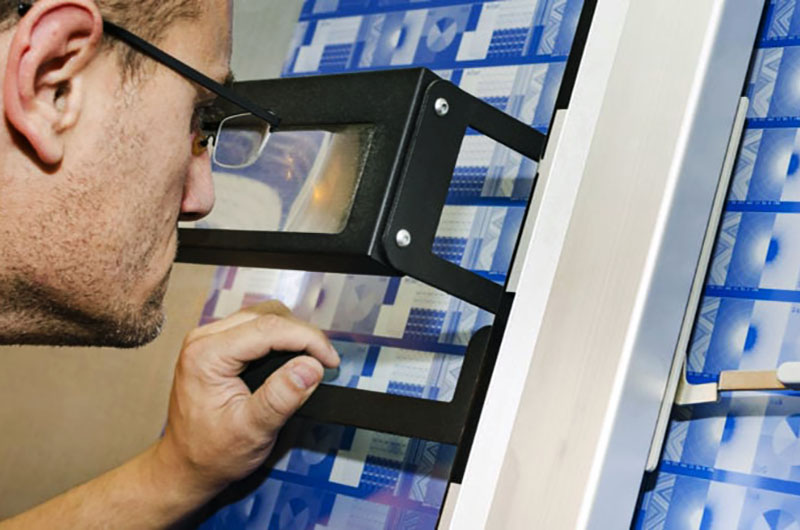Feb. 28, 2025
CTCP Printing Plates is an innovative printing solution that combines digital printing with traditional offset printing technology, making it an ideal choice for high-quality image production. It offers significant advantages in cost control, production efficiency, and environmental protection. This technology uses a digital plate-making system, where images are precisely etched onto the printing plate using lasers, eliminating the complex process of using films in traditional printing.

High-Quality Images
CTCP Printing Plates produce sharp, clear, and high-quality images. Compared to the traditional offset printing plate-making process, CTCP technology uses digital laser etching to precisely control the image transfer process, ensuring consistent and high-resolution image quality. This high level of image quality is particularly important for printing applications that require detailed color reproduction and precise details, such as high-end advertising prints, art reproductions, and corporate branding materials.
High Production Efficiency
CTCP Printing Plates significantly reduce the time required from design to printing. Traditional offset printing involves the use of films for plate-making, which is complex and time-consuming. CTCP technology, on the other hand, uses a digital plate-making system that directly generates printing plates from a computer, eliminating the need for traditional film production and post-processing. This greatly enhances production efficiency, making it especially suitable for businesses that need to respond quickly to market demands and complete printing projects in a short time. Fields such as fast publications, marketing materials, and short-run printing can particularly benefit from this advantage.
Cost-Effective
CTCP Printing Plates offer cost efficiency in multiple aspects. Traditional offset printing requires the purchase of films, chemicals, and other related materials, whereas CTCP technology eliminates the use of films and chemicals, reducing production costs. Additionally, the digital plate-making system requires minimal manual intervention, reducing human errors and waste, which further lowers overall printing costs. For large-scale production, CTCP technology enhances economic benefits by improving production efficiency and reducing plate-making costs.
Environmentally Friendly
CTCP Printing Plates also serve as an eco-friendly printing solution. Unlike traditional offset printing methods, the CTCP plate-making system does not rely on chemicals and solvents, thus reducing environmental pollution. This technology eliminates the use of harmful chemicals like developers and fixers commonly used in traditional plate-making, which pose significant risks to the environment and worker health. Moreover, the precision of the digital plate-making system minimizes waste, reducing the burden of waste disposal and promoting a greener printing industry.
With its efficiency, cost-effectiveness, and eco-friendly features, CTCP Printing Plates has become an important technology in the modern printing industry for solving the challenges of high-quality, low-cost production.
Choosing the right CTCP Printing Plates requires considering multiple factors, including printing requirements, plate material, resolution, durability, surface treatment, cost-effectiveness, environmental requirements, compatibility, and the technical support provided by the supplier.
Printing Requirements
First, it is crucial to clarify the specific requirements of the printing project. Different printing projects have different demands on the plates, such as:
Plate Material
The material of CTCP plates directly impacts the quality of the printing effect, the lifespan of the plates, and production efficiency. Common CTCP plate materials include:
Plate Resolution
The resolution of CTCP plates is a key factor affecting image quality. The higher the resolution, the more detail the plate can etch. Selection should consider the following:
Durability and Lifespan of Plates
The durability of CTCP plates determines their usage cycle in production. Selection should be based on the expected printing volume:
Plate Surface Treatment
The surface treatment of CTCP plates directly affects the quality of image transfer and the stability of the printing process. Consider the following:
Cost-Effectiveness
The cost of CTCP plates directly affects overall printing costs. Selection should consider return on investment:
Plate Compatibility
Ensure that the selected CTCP plates are compatible with existing printing equipment and plate-making systems. Different brands and models of CTCP plates may perform differently on laser etching and printing equipment. Confirming compatibility with equipment manufacturers or suppliers helps avoid mismatches and ensures smooth production.
When selecting the right CTCP printing materials, HC Aluminum Printing Materials Co., Ltd. provides comprehensive solutions backed by our extensive experience and professional technical support to meet your production needs. We specialize in thermal CTP plates, PS plates, and other products, with an annual production capacity of 6 million square meters. Our products are exported to over 30 countries, including Russia, Korea, India, Pakistan, and Egypt, covering regions such as Eastern Europe, Southeast Asia, West Asia, and Africa.
Choosing HC Aluminum Printing Materials Co., Ltd. means selecting not just a supplier but a reliable partner. With our strong production capacity, excellent product quality, global service network, and advantages in environmental protection and cost-efficiency, we are committed to providing the highest quality printing materials and professional technical support to global customers. We help you improve production efficiency, reduce costs, and achieve higher printing quality. No matter where you are, we will provide you with perfect solutions to support your business success.
Users viewing this material also viewed the following
Further reading: ctcp platectcp plate making machinectcp printing plates